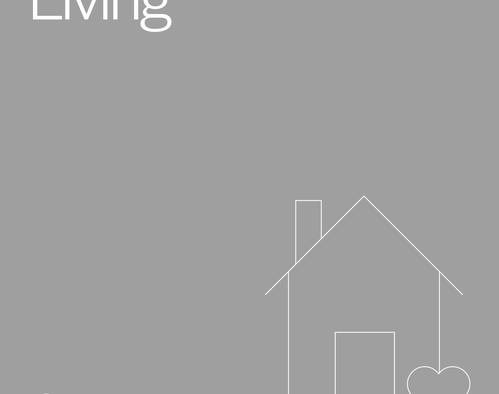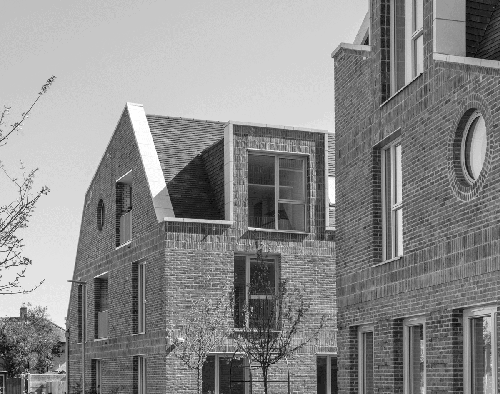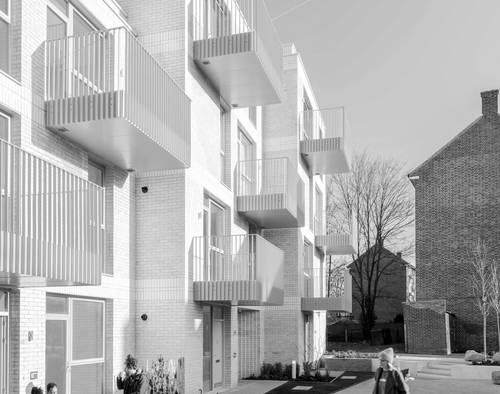Designing Homes with Empathy
November 2020
By Kyle Buchanan
We need to ensure we are creating places to live from the perspective of people who have different needs and priorities from our own, says Kyle Buchanan
Article originally published in Housing Today, November 2020.
There is often a point during the design of a housing scheme when we find ourselves asking the question“would you be happy to live in that home?”.We use the question as a kind of sense check, to help see through the fog of regulations that, whilst helping to guarantee a minimum standard of housing quality, can sometimes obscure the wider objective of designing homes that are comfortable and fulfilling places to live. Asking a simple question helps us step back from the design process and apply a dose of common sense and lived experience.
Being able to imagine yourself living comfortably in a home you are designing seems like a basic litmus test for anyone engaging in housing design. That doesn’t mean to say we should only design family homes, or one-bed flats as dictated by our personal circumstances. It does, however, stand to reason that we should be able to imagine how it would feel to live in the spaces that we are designing. Would they meet practical needs as well as emotional ones? Would you feel a sense of relief and sanctuary returning home? If you share a home, are there spaces to come together with your co-habitants as well as spaces to be on your own?
Whilst living in a well-designed home doesn’t guarantee happiness, recent research by Public Health England, Shelter, BRE and others has shown that thoughtfully designed housing can have a hugely beneficial impact on residents’ wellbeing and health. In that sense designing homes can and should be a compassionate act. Getting small things right can make a huge difference by removing an obstacle, avoiding a minor (or major) annoyance or creating a joyful moment. As designers we have an important contribution to make to the happiness of the people we are designing for. It is our gift, our responsibility, to find ways to improve someone’s daily life by, for example, creating a room that catches the sun in the morning, engineering a beautiful view from a window, or a making sure bedrooms are located away from external noise so that people get a good night’s sleep.
Being able to use personal experience to inform design proposals can be a powerful tool, but it is also important to recognise and acknowledge its limitations. In our diverse city, we are frequently designing for people from different backgrounds, different cultural, religious and ethnic groups, people of different ages, people with disabilities, health conditions or specialist individual requirements.
This is one of the reasons why it is important to have diverse design and client teams on multi-unit housing projects. In the simplest sense a more diverse team has a more diverse set of life experiences to draw on to understand the needs of residents. But every team will have its limitations and so we need to work hard as designers to build our understand and empathy for the experiences of people who are different from us.
The obvious way to do this is to include residents in the design process in ways that enable their experiences to inform the outcomes. Despite this, genuine and effective end-user engagement remains surprisingly absent from the design process of many buildings. This is all the more surprising, when you consider that understanding and recording user experience is a fundamental part of most other design disciplines. In architecture we still too frequently confuse ‘consultation’ with proper engagement and research into what residents want and need. The reality is that presenting a more or less complete building design to residents for feedback, is not the same as starting a design process by listening to them.
To deliver outstanding housing that really works for residents and communities we need to work on being able to mentally inhabit our design proposals and road-test them based on our own life experiences. However, we need to go further than that and be able to understand what it will be like to live in the homes we are designing from the perspective of people who have different needs and priorities from our own. In that sense listening and empathy are design skills that need to be honed and practiced as much as any others.



